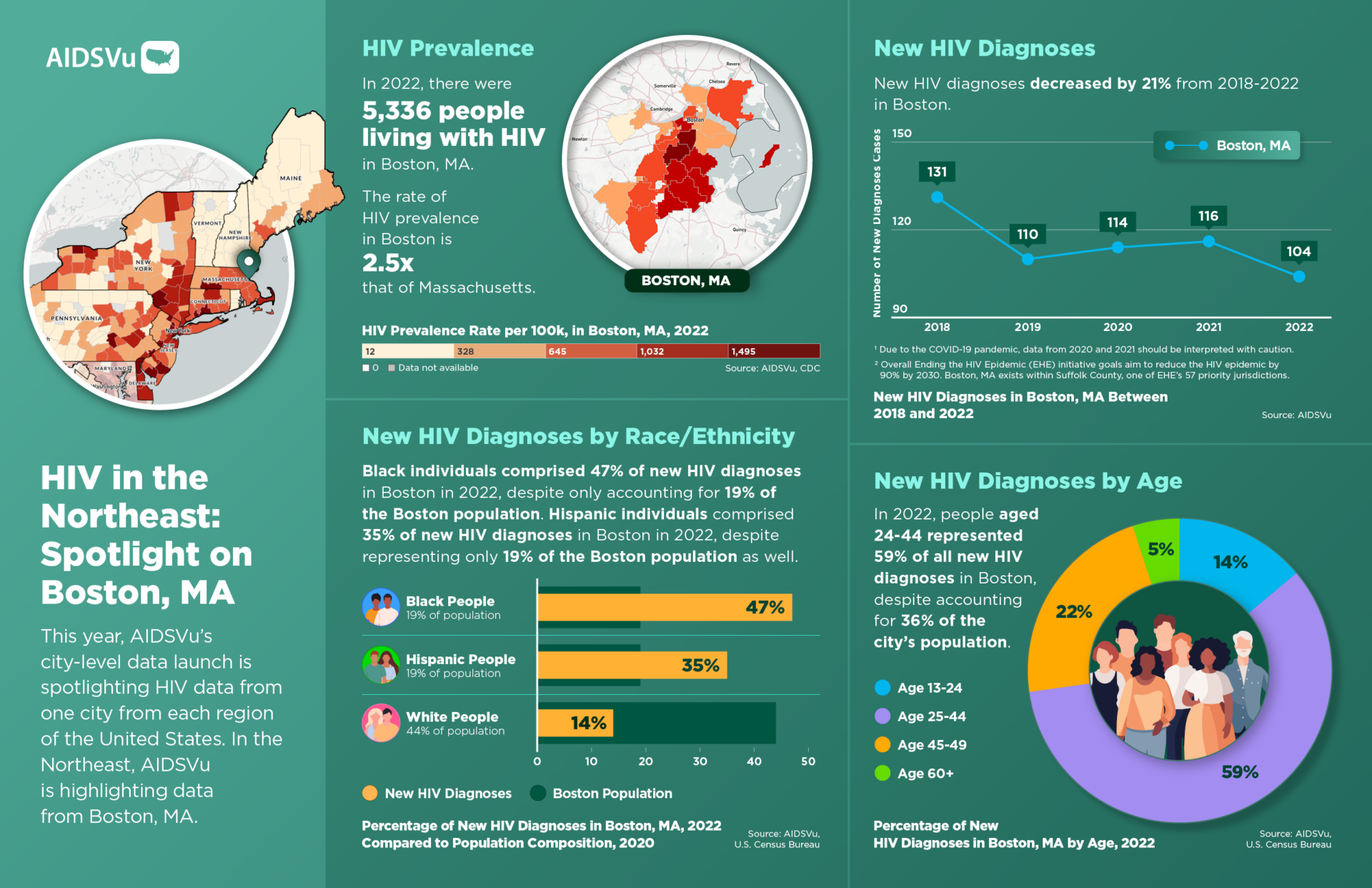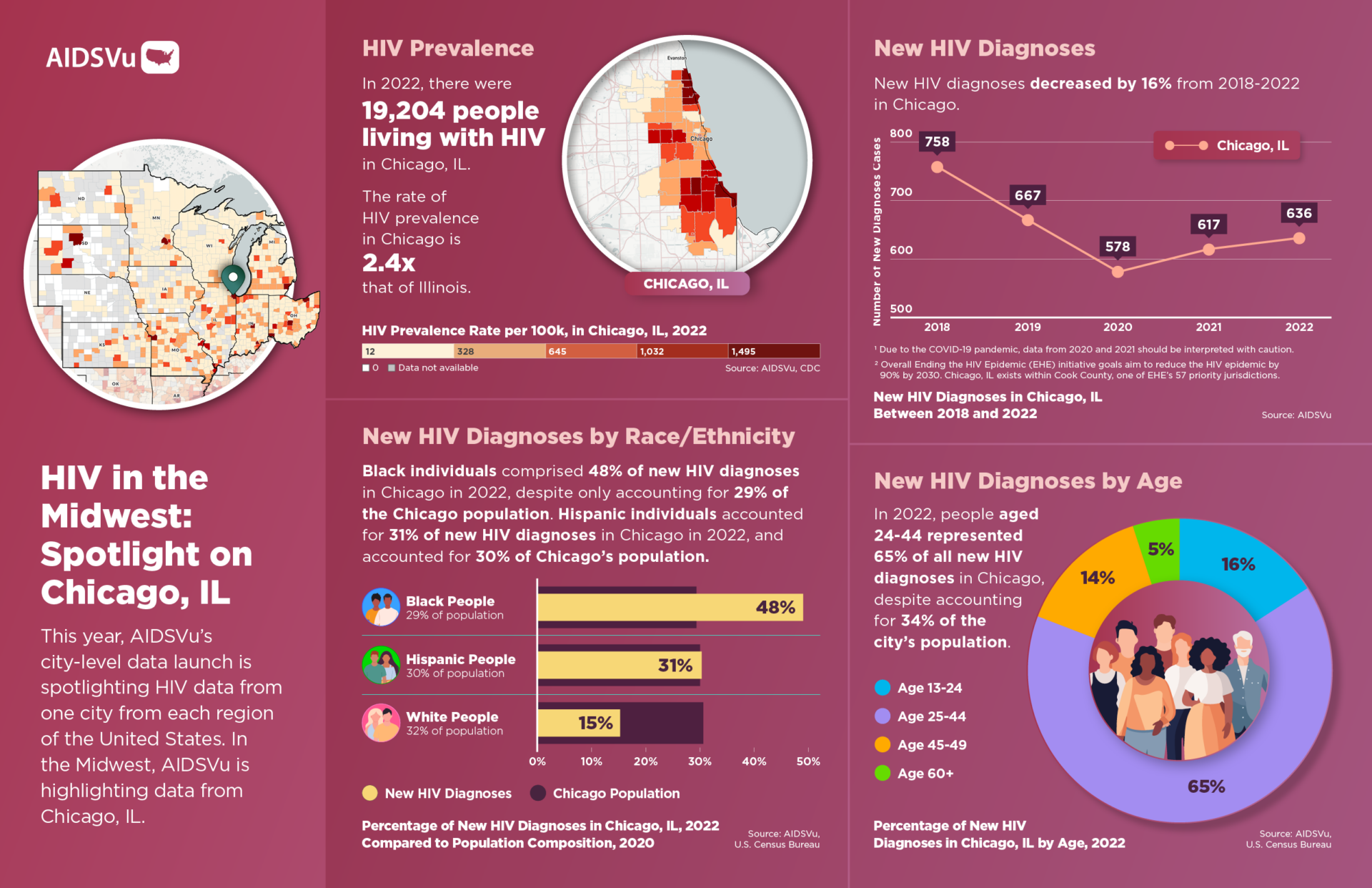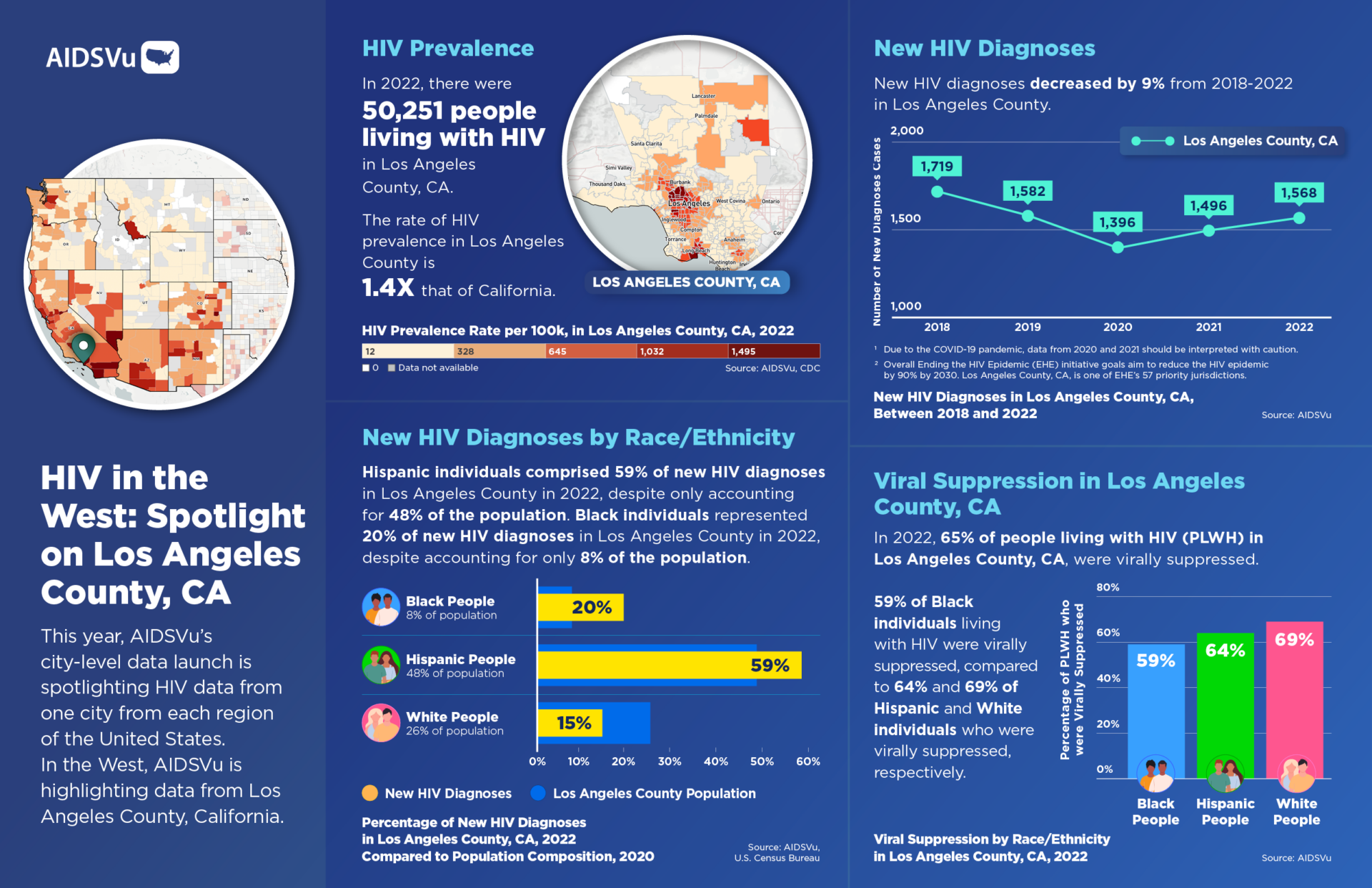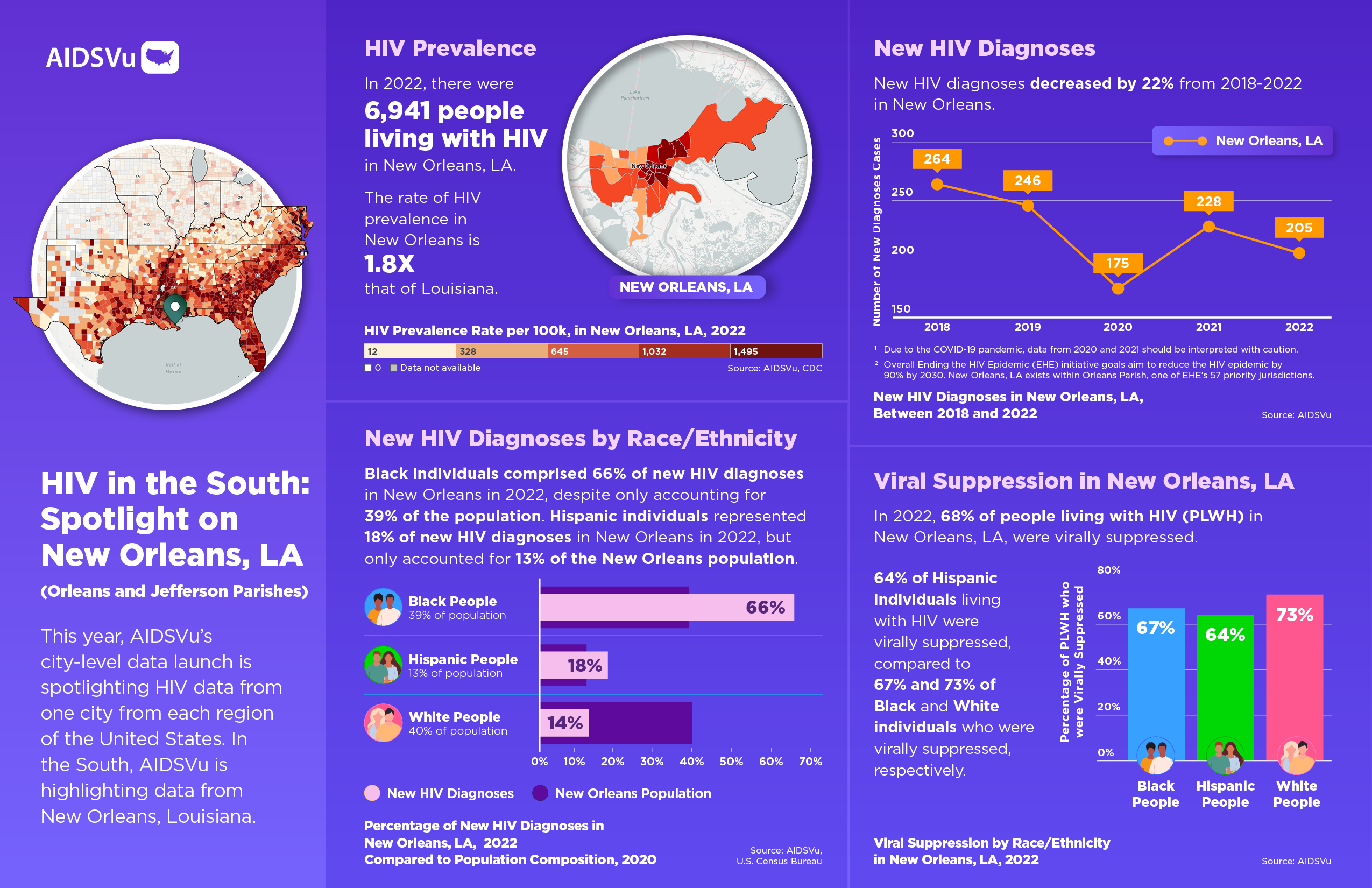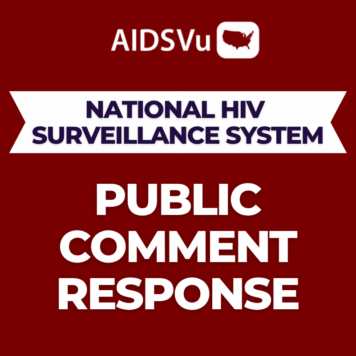AIDSVu releases 2022 data at the ZIP code-level for 58 U.S. cities, representing more than half of all new HIV diagnoses in the U.S. and Puerto Rico in 2022.
This year, AIDSVu is also featuring key HIV-related data insights for four major cities in prominent Ending the HIV Epidemic priority jurisdictions, including Boston, MA, Chicago, IL, Los Angeles County, CA, and New Orleans, LA.
Atlanta, GA – Today, AIDSVu , a leading HIV/AIDS data platform dedicated to making HIV data widely available, easily accessible, and locally relevant – released 2022 ZIP code-level HIV data and interactive maps for 58 cities across the U.S. AIDSVu is the only platform to provide collective HIV/AIDS data at the city-level, and works with state and local health departments across the country to publish the most recent HIV data available while working towards the addition of new cities each year.
This year, AIDSVu has added two new cities – Oklahoma City, OK, and Tulsa, OK – to its interactive map database. Oklahoma is uniquely positioned as one of the seven EHE priority states, and the addition of Oklahoma City and Tulsa allows for further visualization of the HIV epidemic in the South Census Region. AIDSVu’s city launch is the culmination of AIDSVu’s yearly data updates, which included updates to state and county data earlier this fall.
“Viewing locally relevant data through a health equity lens is at the core of AIDSVu’s mission as the only platform to visualize more than half of the national HIV epidemic at the ZIP code-level,” said Patrick Sullivan, DVM, PhD, Professor of Epidemiology at Emory University’s Rollins School of Public Health, and Principal Scientist for AIDSVu. “AIDSVu’s annual ZIP-code level data launch, and the ability to view said data by race/ethnicity, sex, and age, sheds light on health inequities in major cities within some of the most prominent EHE jurisdictions in the nation. Equipped with this data, AIDSVu provides decisionmakers with the ability to understand health disparities among their constituents and in nearby communities – enabling them to advance policies, programs, and initiatives to end the HIV epidemic.”
AIDSVu’s newest city data visualizes HIV data in 22 of the 25 most populous cities in the U.S., as well as 24 of the 25 Metropolitan Statistical Areas (MSAs) with the highest number of HIV diagnoses in 2022. Updated maps include data on HIV prevalence, new HIV diagnoses, linkage to care, late diagnoses, receipt of care, and viral suppression, along with demographic data including poverty, median household income, income inequality, and severe housing cost burden. For deeper dives into the dynamics of the HIV epidemic, users can view HIV prevalence, new diagnoses, linkage to care, late diagnoses, receipt of care, and viral suppression by age, race, and sex. Maps can be viewed here.
AIDSVu’s New Location Profiles
AIDSVu’s new location profiles make city-level data more accessible than ever. Users can now view the current HIV epidemic by city through several lenses – including general HIV-related data, the continuum of care, social determinants of health, the lived experiences of people living with HIV, and the Ending the HIV Epidemic initiative. The location profiles provide information that is relevant for presentations, advocacy work, and academic research — view, download, and print the new location profiles here.
To commemorate this year’s city-level data launch, AIDSVu has selected four cities – all of which reside in prominent EHE jurisdictions – to explore regional and demographic disparities. This year’s selected cities include Boston, MA, Chicago, IL, Los Angeles County, CA, and New Orleans, LA. See below for quick facts on the HIV epidemic in these four cities:
Boston, MA:
- In 2022, 5,336 people were living with HIV in Boston. Black and Hispanic individuals comprised 39% and 25% of people living with HIV in Boston in 2022, respectively.
- There were 104 individuals newly diagnosed with HIV in Boston in 2022. Black individuals accounted for 47% of these new diagnoses, despite only representing 19% of the Boston population. Hispanic individuals accounted for 35% of new HIV diagnoses in Boston in 2022, despite also representing 19% of the Boston population.
Chicago, IL:
- In 2022, 19,204 people were living with HIV in Chicago, with Black individuals accounting for almost half of all people living with HIV in Chicago in 2022.
- There were 636 individuals newly diagnosed with HIV in Chicago in 2022. Black individuals accounted for 48% of these new diagnoses despite only representing 29% of Chicago’s population. Hispanic individuals accounted for 31% of new HIV diagnoses in Chicago in 2022 and accounted for 30% of Chicago’s population.
- Los Angeles County, CA:
- In 2022, 50,251 people were living with HIV in Los Angeles County, with Hispanic individuals accounting for nearly half of all people living with HIV in Los Angeles County.
- There were 1,568 individuals newly diagnosed with HIV in Los Angeles County in 2022 – with Hispanic individuals representing nearly 60% of all new HIV diagnoses in Los Angeles County in 2022 but only accounting for 48% of the Los Angeles County population. Additionally, Black individuals accounted for 20% of new HIV diagnoses in Los Angeles County in 2022 – but only represented 8% of the Los Angeles County population.
New Orleans, LA:
- In 2022, 6,941 people were living with HIV in New Orleans. Black individuals accounted for 66% of all people living with HIV in New Orleans in 2022.
- There were 205 individuals newly diagnosed with HIV in New Orleans in 2022. Black individuals accounted for 66% of these new diagnoses but only represented 39% of the New Orleans population. Hispanic individuals accounted for 18% of new HIV diagnoses in New Orleans in 2022, but only represented 13% of the New Orleans population.
Major city-level data updates this year include:
- ZIP Code-level maps showing HIV prevalence (2022) and new diagnoses (cumulative 2018 to 2022) for 58 U.S. cities – including 22 of the 25 most populous cities in the U.S.
- ZIP Code-level maps showing HIV care continuum indicators in 2022, such as linkage to care, late HIV diagnoses, receipt of care, and viral suppression for 58 U.S. cities.
- Updated and more accessible city-level location profiles that can be downloaded as city-specific factsheets.
- ZIP Code-level maps exhibiting social determinants of health – including poverty, education, median household income, income inequality, and housing cost burden.
- Interactive service locators, including HIV testing, PrEP, HIV care, stigma reduction, overdose prevention/reversal, harm reduction and trauma-informed care.
New Cities on AIDSVu:
AIDSVu’s latest city-level data now includes maps for Oklahoma City, OK, and Tulsa, OK. Oklahoma is one of seven EHE priority states for Phase 1 of Ending the HIV Epidemic: A Plan for America, a ten-year initiative to end the HIV epidemic in the U.S. Check out the ZIP Code-level maps for these two new cities here.
Cities Available on AIDSVu:
Birmingham, AL, Mobile, AL, Montgomery, AL, Phoenix, AZ, Los Angeles County, CA, Orange County, CA, Oakland/Alameda County, CA, San Diego, CA, San Francisco, CA Denver, CO, Bridgeport, CT, Hartford, CT, New Haven, CT, Washington, DC, Fort Lauderdale, FL, Jacksonville, FL, Miami, FL, Orlando, FL, Tampa, FL, West Palm Beach, FL, Atlanta, GA, Chicago, IL, Baton Rouge, LA, New Orleans, LA, Baltimore, MD, Boston, MA, Detroit, MI, Minneapolis, MN, Jackson, MS, Kansas City, MO, St. Louis, MO, Las Vegas, NV, Jersey City, NJ, Newark, NJ, New York City, NY, Charlotte, NC, Raleigh, NC, Cincinnati, OH, Cleveland, OH, Columbus, OH, Oklahoma City, OK, Tulsa, OK, Philadelphia, PA, San Juan, PR, Providence, RI, Charleston, SC, Columbia, SC, Memphis, TN, Nashville, TN, Austin, TX, Dallas, TX, Fort Worth, TX, Houston, TX, San Antonio, TX, Hampton Roads, VA, Richmond, VA, Seattle, WA, Milwaukee, WI.
About AIDSVu’s Annual City Data Update:
AIDSVu is presented by Emory University’s Rollins School of Public Health in partnership with Gilead Sciences, Inc. and the Center for AIDS Research at Emory University (CFAR). AIDSVu continues to advance its mission to make HIV data widely available, easily accessible, and locally relevant to inform public health decision-making. The site aims to provide researchers, policymakers, and community members with a more comprehensive understanding of the HIV epidemic at the local-, state-, and national-level.
ZIP Code-level data were provided by state and city health departments and compiled by researchers at the Rollins School of Public Health. Learn more about AIDSVu’s HIV care continuum data and sources, see our FAQ and Data Methods.

